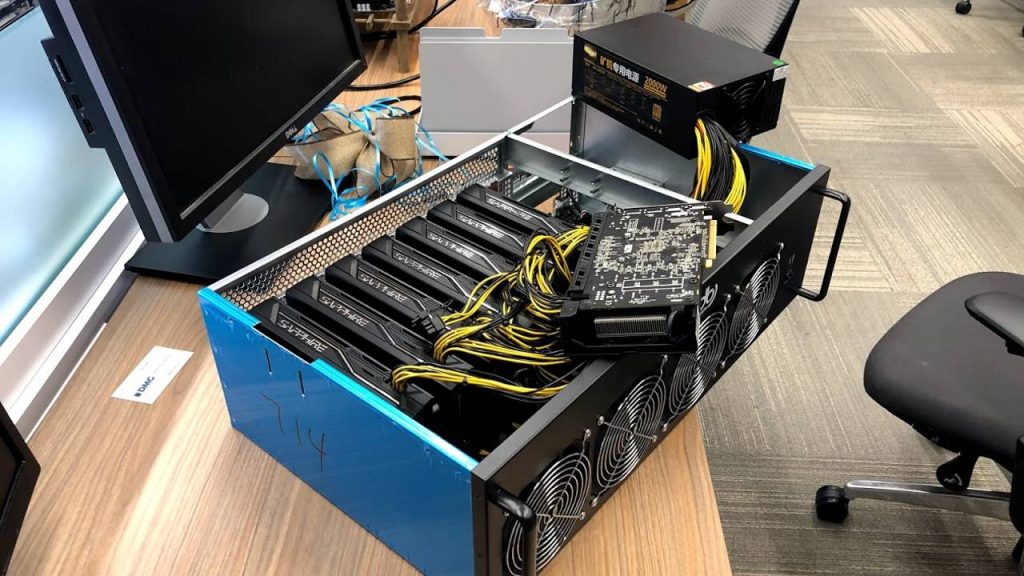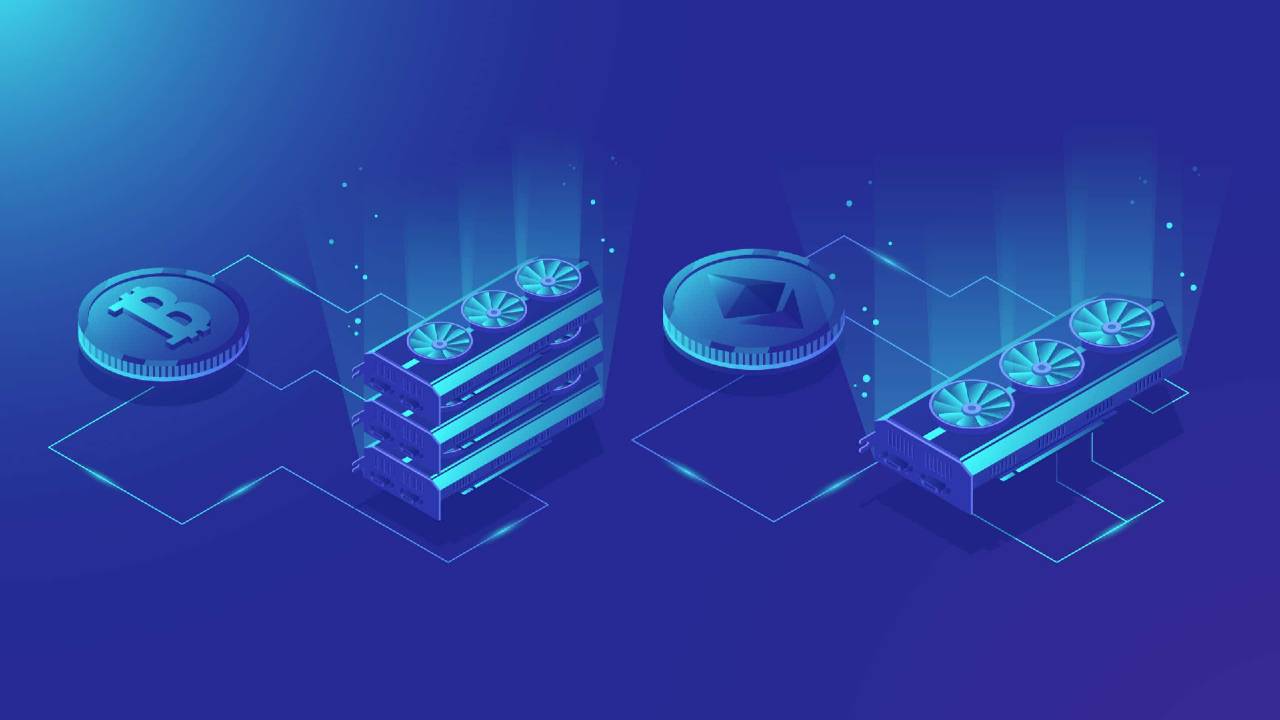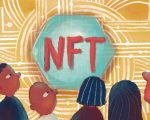Cryptocurrency mining is a process of using specialized computer hardware to verify and record transactions on the blockchain. To be successful at mining cryptocurrency, it is important to have the right tools. This article will provide an overview of some of the most popular crypto mining tools and discuss the factors to consider when selecting mining tools.

Introduction
In the early days of Bitcoin mining, it was possible to mine for the cryptocurrency using a standard desktop or laptop computer. However, as more and more people got involved in mining, the difficulty of solving the equations necessary to earn Bitcoin increased. This meant that miners needed to find more powerful ways to mine for Bitcoin.
When it comes to mining for cryptocurrency, there are a variety of different tools that can be used. However, it’s important to choose the right tools for your specific needs to be successful. In this article, we’ll discuss how to choose the right crypto-mining tool for your needs.
What Is Bitcoin Mining Software?
Bitcoin mining software is how you hook your mining hardware into your desired mining pool. Mining pools are collections of miners who work together to increase their chances of finding a block and receiving a reward.
You will need two things toto start mining: a bitcoin mining rig and bitcoin mining software.

What Are Mining Pools?
A mining pool is a group of Bitcoin miners who combine their computing power to increase their chances of finding a block. By working together in a pool and sharing the payouts amongst participants, miners can get a steady stream of bitcoin starting the day they activate their miners.
What You Need To Mine Bitcoins
Overview of crypto mining tools
There are a few things to consider when choosing the right crypto-mining tools for your needs. The first is what type of hardware you will need. ASICs (Application Specific Integrated Circuits), GPUs (Graphics Processing Units), FPGA, and s (Field Programmable Gate Arrays) are all types of hardware that can be used for cryptocurrency mining. Each has its advantages and disadvantages. We consider them above.
If you want to get the most out of your mining efforts, then you need to choose the right crypto-mining tools for your needs. Depending on what type of cryptocurrency you want to mine, you will need different tools. For example, if you want to mine Bitcoin, then you will need an ASIC. If you want to mine Ethereum, then you will need a GPU.
To find the right tools for your needs, you should do some research on the different types of cryptocurrency and the tools that are available for each one. Once you have an understanding of the different options, you can then make a decision based on your budget and the level of commitment you are willing to make.
Important advice about mining tools
When selecting crypto mining crypto-mining tools, it is important to consider the following factors:
- The type of cryptocurrency you want to mine for. ASICs are best suited for mining Bitcoin, while GPUs and FPGAs can be used for a variety of different cryptocurrencies.
- The hash rate. This is the number of hashes that can be processed per second. A higher hash rate means more cryptocurrency can be mined in a shorter period.
- Power consumption. Cryptocurrency mining can be very energy-intensive, so it is important to consider the power consumption of the mining rig when selecting mining tools.
- Cost. ASICs and GPUs can be expensive, so it is important to compare the cost of different mining rigs before making a purchase.

ASICs
ASICs are purpose-built chips that are designed specifically for mining cryptocurrency. They are very efficient at mining and can generate a lot of hash power. However, they are also very expensive and require a lot of electricity to run.
They are much more efficient than GPUs and FPGAs but they also cost more. Pricing of ASICs can range from a few hundred dollars to several thousand dollars.
There are different types of ASICs for different cryptocurrencies. For example, there are ASICs for Bitcoin, Ethereum, Dash, etc.
GPUs
GPUs are used for gaming and can also be used for mining. GPUs are general-purpose chips that can be used for a variety of tasks, including graphics processing and mining. They are not as efficient as ASICs but they are much cheaper and don’t require as much electricity.
FPGAs are similar to ASICs but they are programmable and can be used for other tasks beyond mining cryptocurrency.
FPGAs
FPGAs are the fastest and most efficient crypto mining crypto-mining tools available on the market. They are also the most expensive. If you are serious about mining for cryptocurrency, then an FPGA is the way to go.

You can read more about crypto hardware in this article.
The Mining Process
What Is A ’64-digit Hexadecimal Number’?
A ’64-digit hexadecimal number’ is a 64-digit number in base 16.
The Bitcoin protocol defines a target threshold to which the SHA-256 hash of a block’s header must be less than or equal to for that block to be valid. The lower the target threshold, the more ‘work’ (computational effort) is required to produce a valid block.
The difficulty threshold is adjusted every 2,016 blocks (approximately every two weeks) based on the time it took to find the previous 2,016 blocks. If the time taken to find the previous 2,016 blocks is less than two weeks, then the target threshold will be increased (making it more difficult to produce a valid block), and if it is more than two weeks then the target threshold will be decreased (making it easier to produce a valid block).
The Bitcoin network comes to a consensus on the current target threshold by evaluating all of the blocks that have been mined in the last two weeks and taking the median time it took to mine those blocks. The target threshold is always a 64-digit hexadecimal number (which is why it is often referred to as a ’64-digit hexadecimal number’).
How Do I Guess At The Target Hash?
The target hash is a number that a hashed block header must be less than or equal to for a new block to be valid. The lower the target hash, the more difficult it is to find a valid block. Each time a block is successfully mined, the mining software will automatically adjust the target hash upward or downward, making it easier or harder to mine the next block.
The target hash is a 256-bit number (extremely large). To make things easier, we usually work in hexadecimal, which is a base-16 number system. This means that there are 16 possibilities for each digit: 0, 1, 2, 3, 4, 5, 6, 7, 8, 9, a, b, c, d, e, f.
The number in between is the target hash. For a new block to be valid, the new block’s header must be less than or equal to the target hash. If it is not, then the new block is invalid and the miners will try again with a different block header.
The target hash is represented in the block header by the nBits field. The nBits field is a 32-bit field that stores the target hash as a 4-byte number.
To calculate the target hash, we need to know the following:
- The size of the nBits field (in bytes)
- The value of the nBits field
- The size of the block header (in bytes)
With that information, we can calculate the target hash like so:
target_hash = 2**(8*(nBits_size – 3)) // target, where // is integer division
For example, let’s say that the nBits field is 32 bits (4 bytes) and the value of the nBits field is 0x1d00ffff. The size of the block header is 80 bytes. We would calculate the target hash like so:
- target_hash = 2**(8*(4 – 3)) // 0x1d00ffff
- target_hash = 2**32 // 0x1d00ffff
- target_hash = 4294967296 // 0x1d00ffff
- target_hash = 4 294 967 296 // 256
- target_hash = 16777216 // 256
- target_hash = 0x1000000 // 256
As you can see, the target hash is a very large number. The number of possible target hashes is 2**256, which is a huge number. For, a new block to be valid, the new block’s header must be less than or equal to the target hash.

The Best Bitcoin Mining Software For 2022
Best Overall: Cgminer
- A popular and trusted mining software that is based on an open-source platform.
- Compatible with Windows, Linux, and OS X.
- It also supports multiple mining pools and devices.
Best for Beginners: EasyMiner
- This software is a graphical interface that is easy to use for beginners.
- It also supports multiple mining pools and devices.
Best for Advanced Users: BFGMiner
- This software is more suited for advanced users as it has a text interface.
- It is also compatible with multiple mining hardware devices.
- This software allows for more customization and is best suited for advanced users.
Best For Ease Of Use: Multiminer
- This software has a graphical interface that is easy to use.
- It is compatible with Windows, Linux, and OS X.
Best Centralized Management: Awesome Miner
- One of the most popular crypto-mining open-source tools on the market, and for good reason.
- Offers centralized management of up to 5000 miners from a single user interface.
- You can also set up remote management and monitoring of your rigs, so you can keep an eye on them even when you’re not at home.

Other Software and Apps
- Kryptex is a Windows app that pays you for cryptocurrency mining. The app is easy to use and can be set up to run on your computer’s idle resources, so you can earn money without doing anything.
- NiceHash is a marketplace that sells and rents out hashpower. Hashpower is the amount of computing power that is needed to mine for cryptocurrency. You can use NiceHash to buy or rent hashpower, and the service will automatically mine for the most profitable coin at the time.
- Minergate is a mining pool that allows you to mine for a variety of different coins, including Bitcoin, Ethereum, Litecoin, and Monero. The Minergate software is easy to use and can be run on Windows, Mac, and Linux.
- Hashing24 is a cloud mining service that allows you to rent hashpower and mine for Bitcoin. The hashing24 team has over 10 years of experience in the cryptocurrency industry, and they offer 24/7 customer support.
- Betterhash is an easy-to-use easy-to-use cryptocurrency mining tool that can be used by anyone, regardless of their experience or technical knowledge. It is software that allows you to mine for Bitcoin, Ethereum, Litecoin, Monero, Dash, and other popular cryptocurrencies. Betterhash is compatible with both CPU and GPU mining devices.
How Do Miners Calculate Their Earnings?
Crypto miners receive rewards for their work in the form of cryptocurrency. For Bitcoin, miners are currently awarded 12.5 BTC per block mined (approximately every 10 minutes). Ethereum miners are rewarded based on their share of work done, rather than their share of the total number of blocks mined.
The total number of blocks mined in a day divided by the total number of miners equals the average number of blocks each miner should get. If there are 100 miners and 100 blocks mined, each miner gets 1 block on average. If a particular miner contributed 2% of the work done that day, they would receive 0.02 blocks (2% of 100).
How much each miner earns is also affected by the cryptocurrency’s difficulty. The difficulty is a measure of how difficult it is to find a hash that will meet the required target. For example, if the target is to find a hash that starts with 10 zeros, the difficulty would be very low and a large number of miners would be able to find a valid hash. If the target is to find a hash that starts with 60 zeros, the difficulty would be very high and it would take a very long time for any miner to find a valid hash.
Downsides Of Mining
Mining can be a very costly endeavor. In addition to the cost of the hardware and electricity, miners also need to pay for internet service, cooling equipment, and any other miscellaneous costs that might arise.
Another downside of mining is that the rewards are not always guaranteed. If the price of the cryptocurrency falls after a miner has mined a block, the miner will still need to pay for their hardware, electricity, and other associated costs. This can lead to miners operating at a loss until the price of the cryptocurrency rises again.
Mining can also hurt the environment. The energy-intensive nature of mining can lead to high electricity usage and associated carbon emissions.

Considerations for selecting mining tools
- What is your budget? ASICs and FPGAs are expensive, while GPUs are more affordable.
- What is the hashrate that you need? This will determine the speed at which you can mine for cryptocurrency.
- How much power do you have available? ASICs, GPUs, and FPGAs all require a lot of power.
- What is the level of noise that you are willing to tolerate? ASICs and FPGAs can be very loud.
- Do you want to mine solo or in a pool? Mining pools allow you to collaborate with other miners to increase your chances of finding a block and receiving a reward.
- What coin do you want to mine? Make sure that your mining tools are compatible with the coin that you want to mine.
When selecting crypto mining crypto-mining tools, it is important to consider your budget, hashrate needs, power availability, and tolerance for noise. You will also need to decide if you want to mine solo or in a pool. Finally, make sure that your mining tools are compatible with the coin that you want to mine.
Conclusion
Cryptocurrency mining is a process of using specialized computer hardware to verify and record transactions on the blockchain. To, be successful at mining cryptocurrency, it is important to have the right tools. ASICs, GPUs, crypto-mining and mining, and, FPGAs are all popular choices for mining rigs. When selecting crypto-mining tools, it is important to consider the type of cryptocurrency you want to mine, the hash rate, power consumption, and cost. Mining pools can be a great way to increase your earnings, but it is important to understand how they work before getting started. Cryptocurrency mining can be a profitable endeavor, but it is important to do your research before getting started.
Learn more about crypto mining tools.
Questions about Crypto Mining Tools
What equipment is needed to mine cryptocurrency?
The most important factor in deciding what crypto-mining tools to use is the type of cryptocurrency you want to mine. Different cryptocurrencies require different mining algorithms, and each algorithm is best suited to different types of hardware. For example, Bitcoin uses the SHA-256 algorithm, which can be mined efficiently with ASICs. Ethereum uses the Ethash algorithm, which is best mined with GPUs.
Another important factor to consider is the cost of the mining hardware. ASICs and FPGAs can be expensive, and you’ll need to factor in the cost of electricity to run them. GPUs are generally more affordable, but they also require more power than ASICs.
How do I start mining crypto at home?
If you’re interested in mining crypto at home, there are a few things you’ll need to get started. First, you’ll need to choose the right hardware. ASICs and GPUs are the most popular options for home miners. Second, you’ll need to select a mining software package. There are a variety of different packages available, and each has its advantages and disadvantages. Third, you’ll need to set up a cryptocurrency wallet to store your earnings. There are many different types of wallets available, so be sure to choose one that’s compatible with the currency you’re mining. Finally, you’ll need to join a mining pool.
Can I mine crypto on my phone?
Mining crypto on your phone is possible, but it’s not going to be very profitable. The biggest issue with mobile mining is the high power consumption. Most phones simply don’t have the battery life to support effective mining. In addition, the processing power of most phones is too low to mine effectively.
What is the most efficient miner?
ASICs are the most efficient miners available. They are specifically designed for mining, and they can outperform GPUs and FPGAs in both power consumption and hashrate.
What is the fastest Bitcoin miner?
The Antminer S9 is the fastest Bitcoin miner currently available. It can mine Bitcoin at a rate of 14 TH/s.
What is the easiest coin to mine?
Ethereum is the easiest coin to mine. It can be mined with a variety of different hardware, and there are many different mining software packages available.
What is the best computer for Bitcoin mining?
The best computer for Bitcoin mining is the one that has the most efficient miners. ASICs are the most efficient type of miner, so you’ll want to be sure to choose an ASIC that’s compatible with the Bitcoin algorithm. In addition, you’ll want to choose a computer with high power consumption to ensure that your electricity costs don’t outweigh your mining profits.
Is mining with a laptop worth it?
Mining with a laptop is generally not worth it. Laptops consume a lot of power, and they are not very efficient at mining. In addition, the processing power of most laptops is too low to mine effectively.
Will Bitcoin mining damage my computer?
Bitcoin mining will not damage your computer. However, the high power consumption of ASICs and GPUs can result in high electricity costs.











